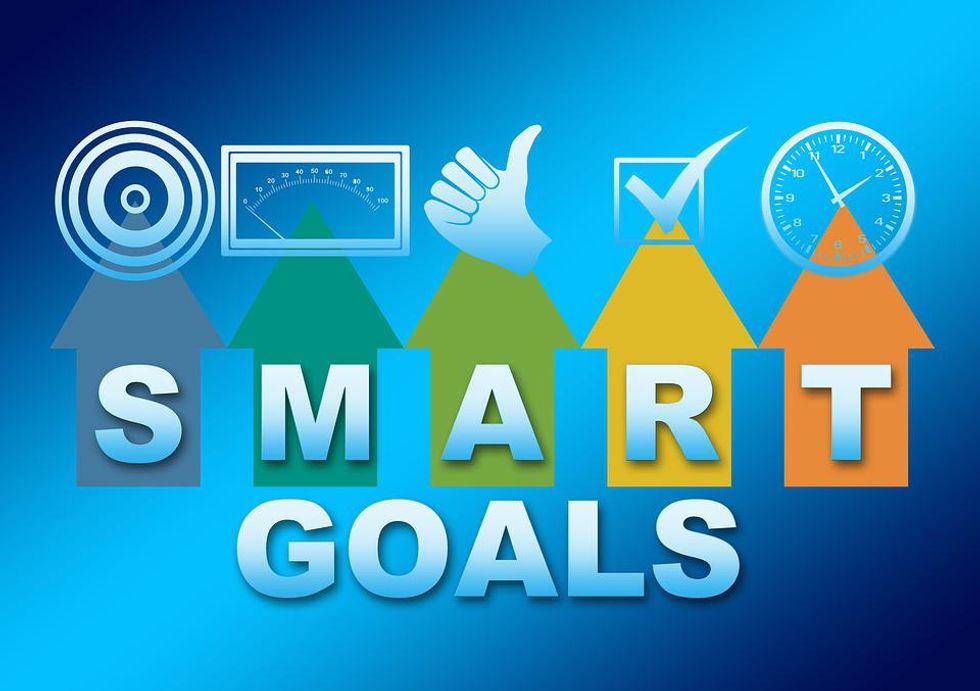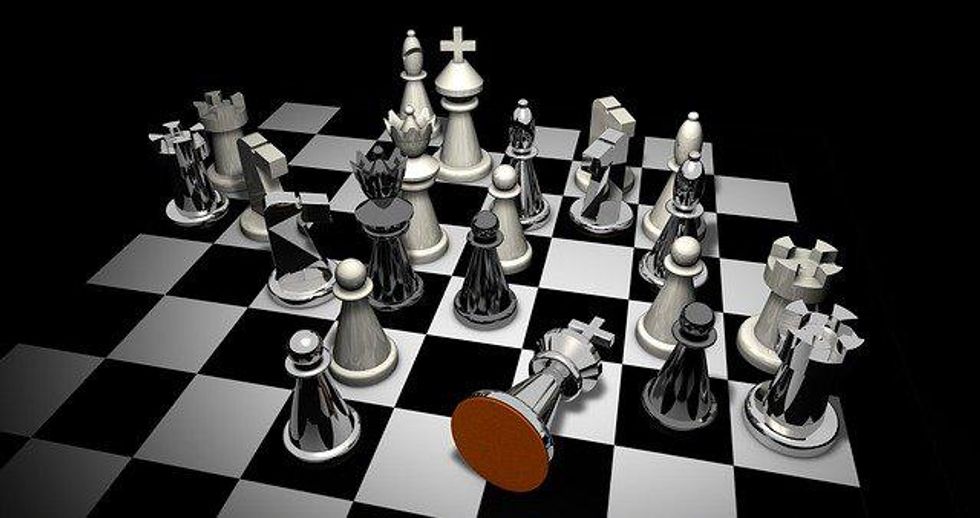
It's important to keep in mind that the process of developing the marketing plan is just as important as the plan itself. The time spent analyzing, strategizing, collaborating, to building consensus is a valuable part of the process. Most marketing plans can be completed within 8-12 weeks depending upon the complexity of the plan, goals, budget, and staff. To kick off your marketing plan development, start with these six key steps.
CONDUCT ANALYSIS: WHERE ARE WE NOW
Before developing your marketing plan, it's important to conduct a situational analysis to determine the health of your business. This situational analysis helps to determine your business's strengths and weaknesses as an organization, and any opportunities for growth, and threats that could hinder that progress (SWOT analysis). The results can help provide a snapshot as to what's really going on with your business.
Strengths: Factors that give an edge for the company over its competitors. What do we do better than our competition? How do we provide more value than our competition? What are our strengths (i.e., valuable, rare, and cannot be imitated)? For example: a strong brand, a loyal customer base, a strong balance sheet, unique technology, etc.
Weaknesses: Factors that can be harmful to an organization from performing at its optimum level to having the potential to be used against the organization by its competitors. Examples include high levels of debt, poor customer service, high employee turnover, weak brand portfolio, lack of capital, etc.
Opportunities: Favorable external factors which can bring a competitive advantage if seized upon. For example, if a country cuts tariffs, a car manufacturer can export its cars into a new market, increasing sales and market share. Source
Threats: Unfavorable situations which can negatively affect and/or harm an organization. For example, a drought is a threat to a wheat-producing company, as it may destroy or reduce the crop yield. Other common threats include things like rising costs for materials, intense competition, increasing fuel prices, aging population, tight labor supply. and so on.
SWOT TABLE
| Strengths 1. What is our competitive advantage? 2. What resources do we have? 3. What products are performing well? | Weaknesses 1. Where can we improve? 2. What products are underperforming? 3. Where are we lacking resources? |
| Threats 1. What new regulations threaten operations? 2. What do our competitors do well? 3. What consumer trends threaten business? | Opportunities 1. What technology can we use to improve operations? 2. Can we expand our core operations? 3. What new market segments can we explore? |
DEFINE TARGET AUDIENCE

Understanding your target market and their behavior patterns is critical and probably one of the most underrated aspects of the planning process. How can you create a great product or offer a great service if you don't know who your target audience is, what they like and need, and how much they are willing to pay?
Businesses struggle to define their target market and too often set their sights broadly, trying to please everyone. One of the biggest marketing errors that brands make is not identifying the target market properly, resulting in all of their marketing efforts to be seen by the wrong people which makes it much more challenging to convert to customers.
A target market is composed of a core or primary target, a secondary target, and a tertiary target.
- The core is composed of consumers who will definitely buy your product.
- The secondary target is composed of consumers who may want to purchase your product through persuasive advertising, from word of mouth knowledge, and by trying the product initially.
- The tertiary target audience is the group of consumers who want to wait and see. They will wait for the product to be popular, the price to be within their purchasing range, and if the product will answer their need at one point in time.
The process of identifying a target market is called market segmentation. This simply means that you break down the market and define the audience or consumer by:
- Demographics: Age, Income, Family Size, Education, Occupation, Gender, Marital Status, Nationality/Race
- Geography: Location, Region of the World, Climate
- Behaviors: Brand Loyalty, Value of Quality
- Psychographics: Personality, Attitudes, Values, Lifestyle, Interests/Hobbies, Behavior
Here are some key areas to start identifying who your target market is:
- Analyze Your Product/Service USP (Unique Selling Proposition)
- Know Your Competition
- Look At Your Current Customer Base
- Choose Your Target Market/Create A Customer Profile
- Evaluate Your Decision
SET SMART GOALS
 Free photo Target Target Agreement Definition Objectives - Max Pixelwww.maxpixel.net
Free photo Target Target Agreement Definition Objectives - Max Pixelwww.maxpixel.netA goal is a broad primary outcome. A SMART goal is specific, measurable, attainable, realistic, and timely. "According to a CoSchedule survey, marketers who set well-defined goals are 376% more likely to report success. The survey also found that 70% of the most organized marketers achieve their goals most of the time, while 10% of organized marketers always achieve them." Source
Let's look at what goes into developing SMART goals:
- Make goals Specific: Goals must be clear as to what you are hoping to achieve. These goals need to be precise and understood by all. For example, "Become the leading brand in your industry, increasing market share by 10% in FY2021."
- Make goals Measurable: Goals must have a criteria for measuring progress. To make a goal measurable, ask: How many/much? How do I know if I have reached my goal? What is my indicator of progress? It's important to set key performance indicators (KPIs) and benchmarks so that you have a solid metric against which to measure progress.
- Make goals Achievable: Goals must be realistically attainable based on your organization's existing skills, resources, and timeframe. For example, if you've seen a 3% growth in social media followers each month, setting a goal for a 20% jump in a short time span might be unattainable. However, setting a 5-10% increase might be more realistic.
- Make goals Relevant: It's important to prioritize achievability when you set relevant business goals. Taking this step ensures setting goals that are relevant to us and that are aligned with our business goals. Be sure you are answering: Does this seem worthwhile? Is this the right time? Is it complementary to other efforts or needs?
- Make goals Time-Bound: Goals must have a deadline or time frame by which they should be achieved. Without that specific deadline, the goal becomes a moving target and unlikely to be reached. By adding deadlines to our goals, we can set priorities and milestones to measure performance.
OUTLINE STRATEGIES

A strategy is the approach you take to achieve a goal. It is a fully fleshed-out blueprint outlining the specific approach that will make it possible to achieve these goals. In defining your specific marketing strategies, ensure that they address your goals and reach your target audience. Each strategy should relate to a specific goal and should be actionable and detailed. Here is an example:
- SMART goal (from above): "Become the leading brand in your industry, increasing market share by 10% in FY2021."
- Strategies:
- Increase brand awareness
- Improve brand reputation with target audience
- Increase customer value
DEFINE TACTICS
 Tactics - Free of Charge Creative Commons Chalkboard imagewww.picpedia.org
Tactics - Free of Charge Creative Commons Chalkboard imagewww.picpedia.orgA tactic is a tool and/or technique you use in pursuing an objective associated with a strategy. Here are some questions you should ask yourself too help identify your tactics:
- What should your marketing budget be? The budget is a tactic.
- Who will you hire to execute your marketing? Making your team is a tactic.
- What types of campaigns or promotions should be used? Planning and executing your campaigns is a tactic.
- Should you do PPC advertising, email marketing, content marketing or something else? Creating your marketing mix is a tactic.
- How long should you wait before making adjustments to the strategy? Deciding on how to analyze your results, what to look for and how to adjust your strategy is a tactic.
SET BUDGET

There are different strategies organizations use to develop a marketing budget. The following are different ways organizations calculate marketing budgets.
- Revenue-Based: Based on a specific percentage of revenue (past, current, or anticipated). It is assumed that there is a correlation between revenue and marketing expenditure and thus why this approach is used.
- Top-Down: Management comes up with a figure and asks that the marketing department stay within those parameters.
- Objectives and Task: Marketer defines specific objectives, determines the task that must be performed to achieve them, and then estimates the costs of performing the tasks. The sum of these costs is the proposed marketing budget. This approach focuses on the actual needs of the company.
- Competition Matching: Budget your marketing based on your competitor's spending. If your competitors are spending 8% of net sales on marketing, then spend more or less the same percent. It is not advisable to follow the competitors blindly since there are so many differences to one's own brand/company.
- Goal-Driven: The budget is set to help achieve established goals. For example, one goal could be to increase social media followers by 10% for FY2021. You would then assign a monetary value to that goal. For social media, that could be worth $0.50 per follower. For this goal, gaining 100 new followers would represent $50.
- Expert Opinion: Internal and external experts provide estimates and assumptions for marketing expenses for a given time period.
As you kick off your marketing planning process with your team, keep in mind that the perfect time to start is six months out. Planning six months out offers a few key benefits. First, you have time to adapt if something comes up. Second, you can build your budget around your biggest events. Finally, it gets them out of the way. Good luck and get to work!
- 6 Tips On B2B Marketing Communications - Work It Daily ›
- 7 Marketing Resume Mistakes To Avoid - Work It Daily ›
- 5 Common Marketing Interview Questions And Answers - Work It Daily ›
- Space Marketing: It's Time To Plan Your Brand's Future - Work It Daily ›
- 3 Mistakes You're Making When Creating A SWOT Analysis - Work It Daily ›

 Bigstock
Bigstock Bigstock
Bigstock Bigstock
Bigstock


